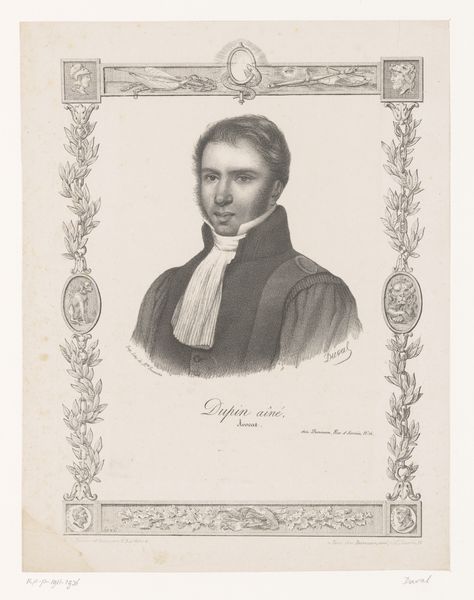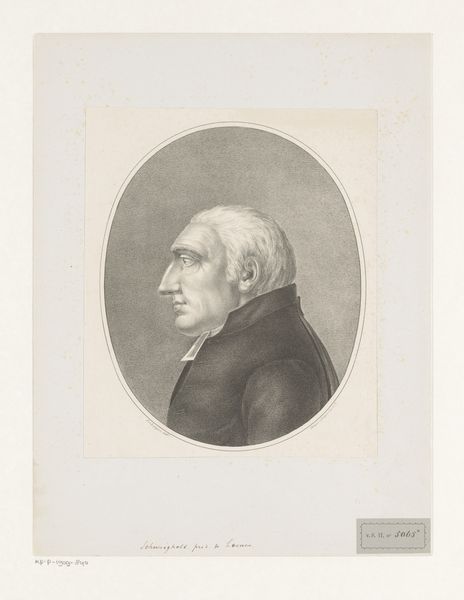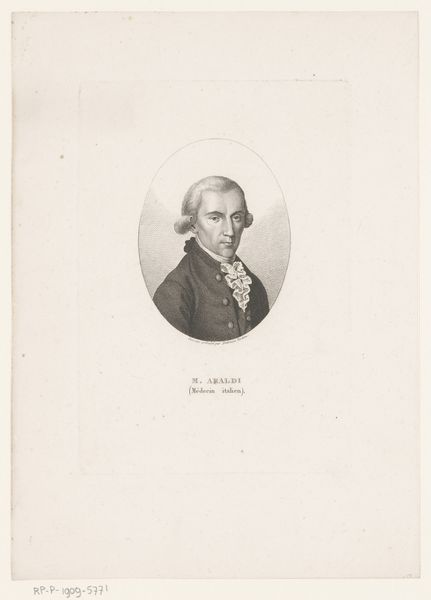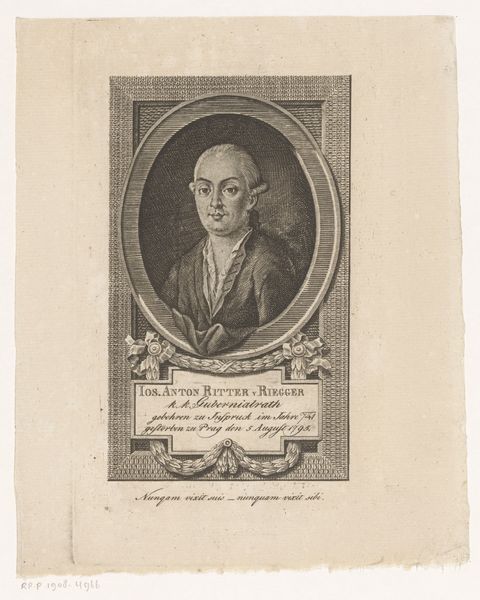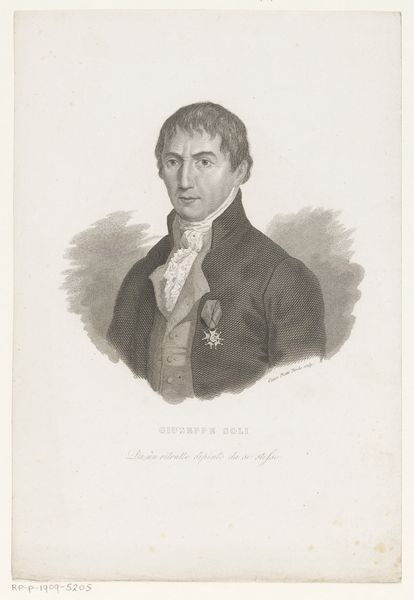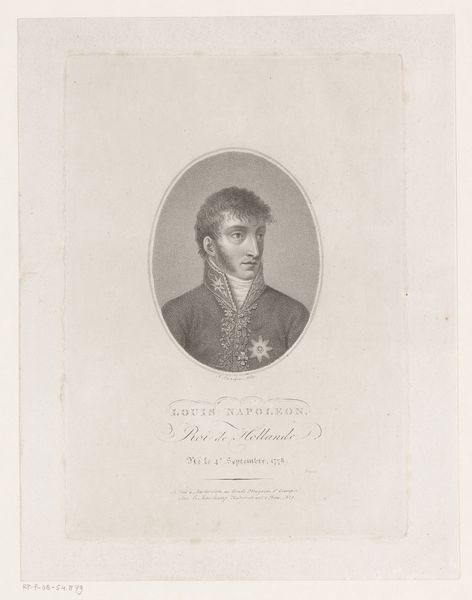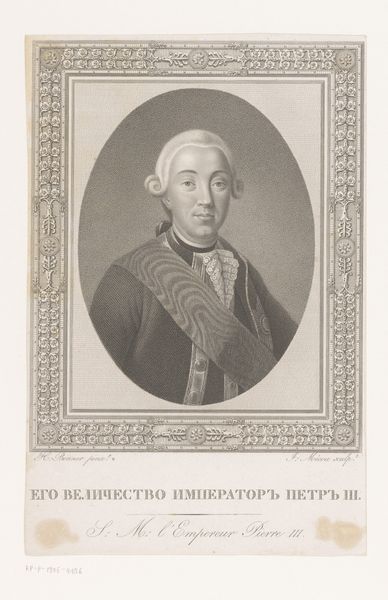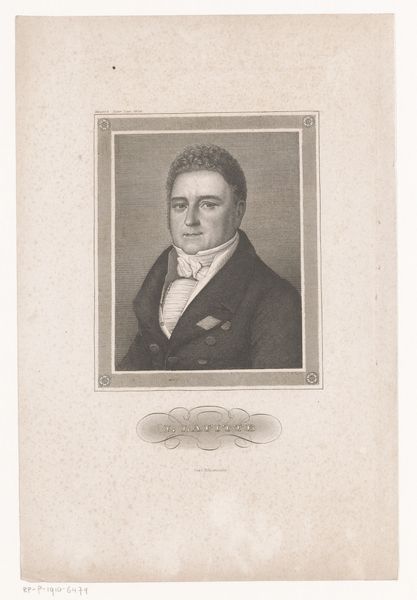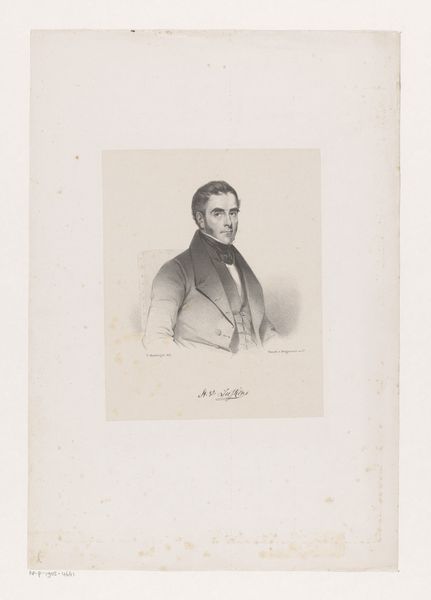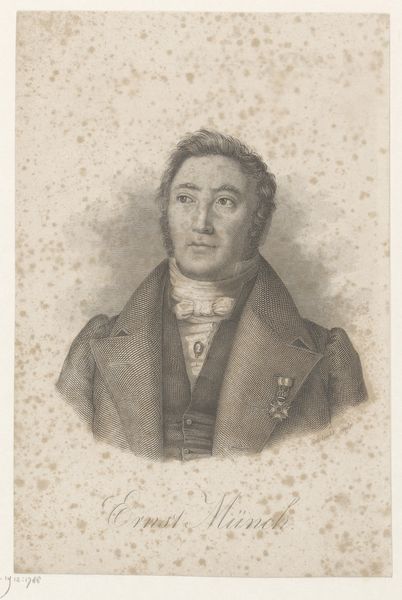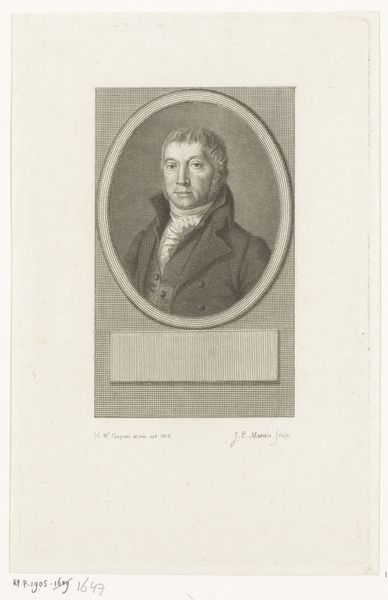
engraving
#
portrait
#
neoclacissism
#
caricature
#
history-painting
#
engraving
Dimensions: height 193 mm, width 122 mm
Copyright: Rijks Museum: Open Domain
Editor: This is "Portret van Péter Asi-Markovics," an engraving from somewhere between 1796 and 1825 by Johann Gottlieb Boettger. It has quite a formal, almost austere feel to it. The oval frame and the coat of arms definitely signal nobility. What strikes you most about it? Curator: I find myself drawn to the symbolism of the laurel leaves encircling the portrait. Think about the history they carry: ancient Greece and Rome, victory, honor, even immortality. What do you suppose the inclusion of the laurel suggests about how Asi-Markovics wished to be seen, or perhaps how Boettger and his patrons wished him to be viewed? Editor: Maybe they wanted to portray him as a noble, historically significant figure, someone to be remembered? The stern expression reinforces that idea. Do you see other symbols at play? Curator: Certainly. Consider the inscription surrounding the portrait itself – "Nobilis Petrus de Asi Markovics". It proclaims his nobility right there within the image. Also the coat of arms. While I can't readily interpret the specific imagery of the shield itself without further research, its very presence is a blatant symbol of familial heritage and elevated status. Does that not lead you to ask questions about power, representation, and the role of visual language in constructing identity? Editor: It really does. The lettering, the leaves, the coat of arms… it’s all working together to project this image of an important man. The effect feels carefully constructed. So how much of it is truth and how much of it is performance? Curator: An excellent question. Portraits were rarely just likenesses. They were carefully crafted narratives. The choice of symbols like the laurel or the inclusion of heraldry was designed to communicate specific messages about the subject. Consider this a fragment of cultural memory. What does it reveal to us about that era's values and aspirations? Editor: I never thought about how much these kinds of choices could contribute to shaping history and shaping memory. It really adds a new dimension to seeing something that would otherwise be just a face from the past.
Comments
No comments
Be the first to comment and join the conversation on the ultimate creative platform.
